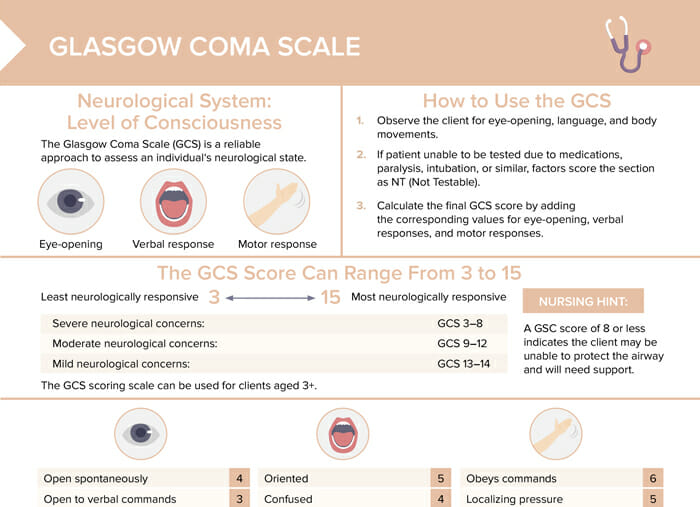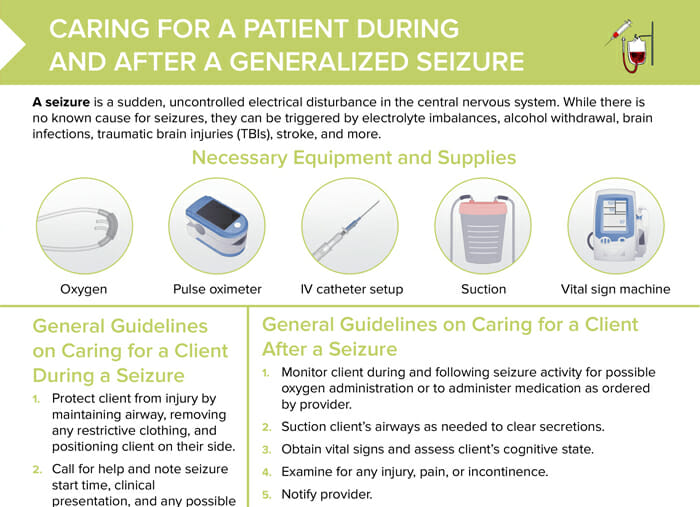What is a seizure and its possible causes?
A seizure is a sudden, uncontrolled electrical disturbance in the central nervous system. The exact cause of seizures is often unknown. Factors that may trigger a seizure include: electrolyte imbalances, alcohol withdrawal, brain infections, traumatic brain injuries (TBIs), stroke, and more.
What to do during a seizure: general care guidelines
- Protect the client from injury by maintaining their airway, removing any restrictive clothing, and positioning them in a side-lying position.
- Call for help and note the seizure’s start time, clinical presentation, and any possible triggers.
- Stay with the client and continue to monitor behaviors and symptoms.
Related videos
What to do after a seizure: general care guidelines
- Monitor the client until full recovery from the postictal state.
- Provide emotional support to the client, family, and others who may have witnessed the seizure.
- Document prodromal signs, duration of seizure activity, type of seizure, body parts involved, incontinence during the seizure, any injuries or pain reported by the client, and medication or oxygen use required.
Necessary equipment and supplies for seizure care
- Oxygen
- Pulse oximeter
- Vital sign machine
- IV catheter setup
- Suction
How to monitor a client during and after a seizure
- Monitor the client during and after seizure activity for possible oxygen administration or medication as ordered by the healthcare provider.
- Suction the client’s airway as needed to clear secretions.
- Obtain vital signs and assess the client’s cognitive state.
- Examine the client for any injury, pain, or incontinence.
Providing emotional support to clients and families after a seizure
- Offer reassurance and understanding to the client, family, and others who may have witnessed the seizure.
- Encourage open communication and address any concerns or questions they may have.
Documenting a seizure: important steps
- Record prodromal signs, duration of seizure activity, type of seizure, body parts involved, incontinence during the seizure, any injuries or pain reported by the client, and medication or oxygen use required.
- Review your organization’s policies on seizure documentation and seizure precautions.

